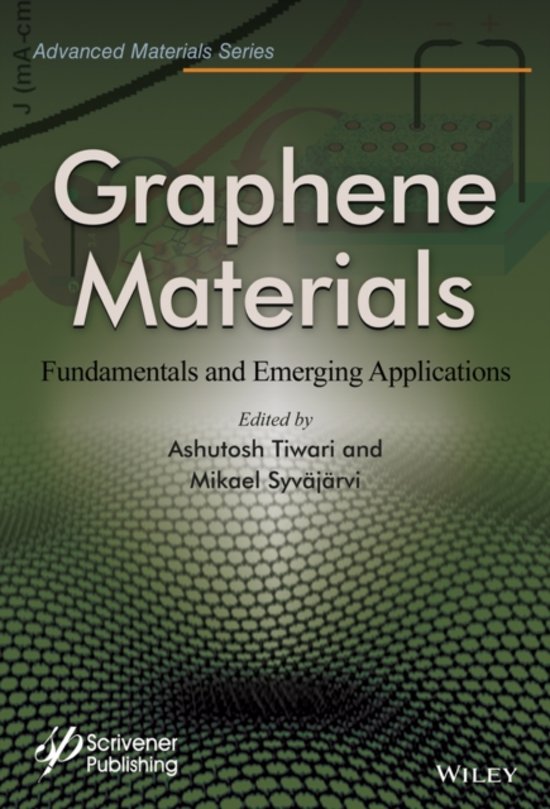
Graphene Fundamentals And Emergent Applications Of Derivatives
Nov 17, 2016. From Research to Applications taking place at the National Physical Laboratory in Teddington. Graphene Flagship work package: 'Fundamental Science of Graphene and 2D Materials Beyond. Emergent applications, Elsevier, 2013 [2] S.M. Clark, Ki-Joon Jeon, Jing-YinChen, Choong-Shik Yho. Fundamentals of Graphene and Graphene-Based Nanocomposites. Graphene and Its Derivatives for Energy Storage. Fundamentals and emerging applications.
Providing fundamental knowledge necessary to understand graphene’s atomic structure, band-structure, unique properties and an overview of groundbreaking current and emergent applications, this new handbook is essential reading for materials scientists, chemists and physicists. Since the 2010 physics Nobel Prize awarded to Geim and Novosolev for their groundbreaking work isolating graphene from bulk graphite, there has been a huge surge in interest in the area. This has led to a large number of news books on graphene. However, for such a vast inflow of new entrants, the current literature is surprisingly slight, focusing exclusively on current research or books on previous 'hot topic' allotropes of carbon. This book covers fundamental groundwork of the structure, property, characterization methods and applications of graphene, along with providing the necessary knowledge of graphene’s atomic structure, how it relates to its band-structure and how this in turn leads to the amazing properties of graphene. And so it provides new graduate students and post-docs with a resource that equips them with the knowledge to undertake their research.
• Discusses graphene’s fundamental structure and properties, acting as a time-saving handbook for validated research • Demonstrates 100+ high-quality graphical representations, providing the reader with clear images to convey complex situations • Reviews characterization techniques relevant to grapheme, equipping the reader with experimental knowledge relevant for practical use rather than just theoretical understanding.
Single-layer molybdenum disulfide (MoS 2) is a newly emerging two-dimensional semiconductor with a potentially wide range of applications in the fields of nanoelectronics and energy harvesting. Css Server Loggerheads. The fact that it can be exfoliated down to single-layer thickness makes MoS 2 interesting both for practical applications and for fundamental research, where the structure and crystalline order of ultrathin MoS 2 will have a strong influence on electronic, mechanical, and other properties. Here, we report on the transmission electron microscopy study of suspended single- and few-layer MoS 2 membranes with thicknesses previously determined using both optical identification and atomic force microscopy. Electron microscopy shows that monolayer MoS 2 displays long-range crystalline order, although surface roughening has been observed with ripples which can reach 1 nm in height, just as in the case of graphene, implying that similar mechanisms are responsible for the stability of both two-dimensional materials. The observed ripples could explain the degradation of mobility in MoS 2 due to exfoliation. We also find that symmetry breaking due to the reduction of the number of layers results in distinctive features in electron-beam diffraction patterns of single- and multilayer MoS 2, which could be used as a method for identifying single layers using only electron microscopy.
The isolation of suspended single-layer MoS 2 membranes will improve our understanding of two-dimensional systems, their stability, and the interplay between their structures, morphologies, and electrical and mechanical properties. Learn more about these metrics Article Views are the COUNTER-compliant sum of full text article downloads since November 2008 (both PDF and HTML) across all institutions and individuals. These metrics are regularly updated to reflect usage leading up to the last few days. The Altmetric Attention Score is a quantitative measure of the attention that a research article has received online. Clicking on the donut icon will load a page at altmetric.com with additional details about the score and the social media presence for the given article.
Find more information on.
Graphene Materials: Fundamentals and Emerging Applications brings together innovative methodologies with research and development strategies to provide a detailed state-of-the-art overview of the processing, properties, and technology developments of graphene materials and their wide-ranging applications. The applications areas covered are biosensing, energy storage, environmental monitoring, and health. The book discusses the various methods that have been developed for the preparation and functionalization of single-layered graphene nanosheets. These form the essential building blocks for the bottom-up architecture of various graphene materials because they possess unique physico-chemical properties such as large surface areas, good conductivity and mechanical strength, high thermal stability and desirable flexibility. The electronic behavior in graphene, such as dirac fermions obtained due to the interaction with the ions of the lattice, has led to the discovery of novel miracles like Klein tunneling in carbon-based solid state systems and the so-called half-integer quantum Hall effect.
The combination of these properties makes graphene a highly desirable material for applications.